Dovetail Brewery – Jenny & Hagen – Chicago
Dovetail Brewery a Chicago. Se devo dirvi la pura verità, quando stavo selezionando tra gli innumerevoli birrifici della metropoli più grande di tutto l’Illinois, inizialmente pensavo che questo birrificio fosse “solamente” uno di quei birrifici fissati per le birre d’ispirazione tedesca, e di cui personalmente non è che sia un fan sfegatato. Andando a visitare il sito e le pagine social, lo avevo messo inizialmente tra i “forse”. Non lo so, ma quando devi scegliere quale birrificio visitare in una città dove ci sono quasi 200 birrifici (!) diventi abbastanza spietato e selettivo avendo solo a disposizione le informazioni che ti arrivano da internet. Con il senno di poi, se non ci fossi andato, me ne sarei pentito amaramente.
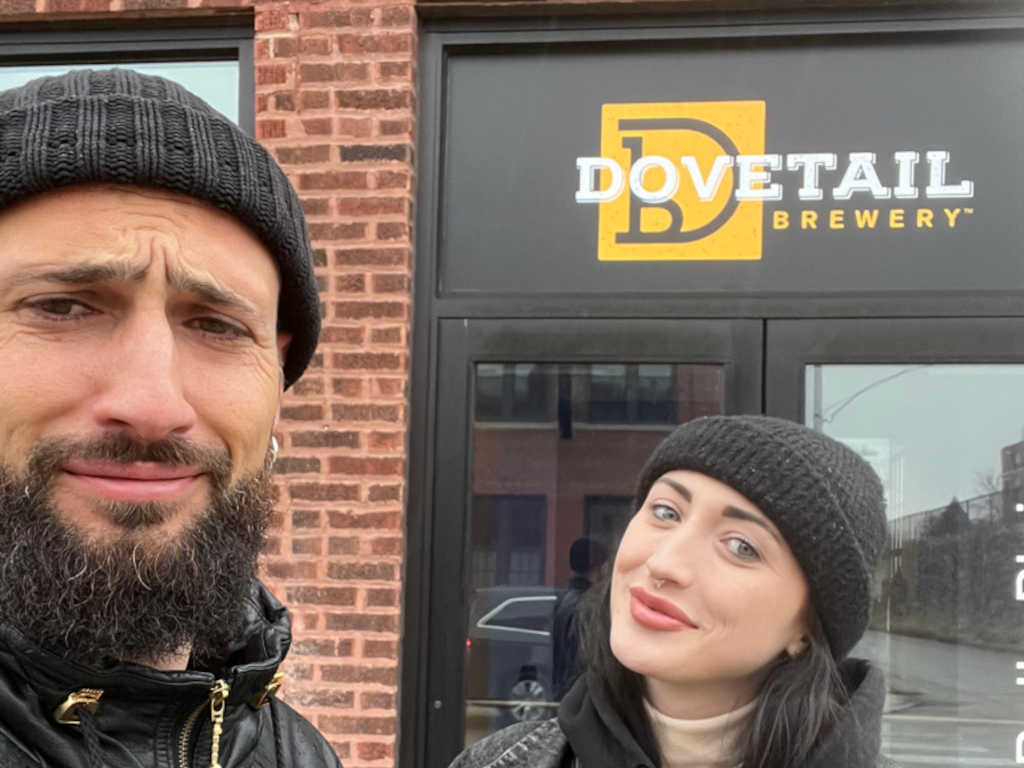
Decido di mettere il birrificio nella top 10, ed inizio a mandare e-mail. Una certa Jenny (birraia) risponde al mio auto-invito a casa loro, dove specifico la mia passata esperienza nel mondo delle birre acide e naturali, e nella gentile e amichevole risposta, noto una piccola nota in fondo:
“Così magari ti mostro anche il nostro progetto di birre a fermentazione spontanea..”
E io penso: “Come?! Cosa?! Ma di che parla?!...Ho sbagliato birrificio? Non era quello delle birre tedesche?”. Vado a ricontrollare il sito e social, e non vedo nulla del genere, niente botti in bella vista, niente coolship. E ripenso: “Se avessero un progetto serio di birre acide spontanee in centro a Chicago, sarebbe scritto da tutte le parti.. t’immagini le foto che farebbero.. mi prende in giro.. o magari stanno studiando un piccolo progettino parallelo, ma non sarà niente di che.”
Niente di più lontano. Vedrete.
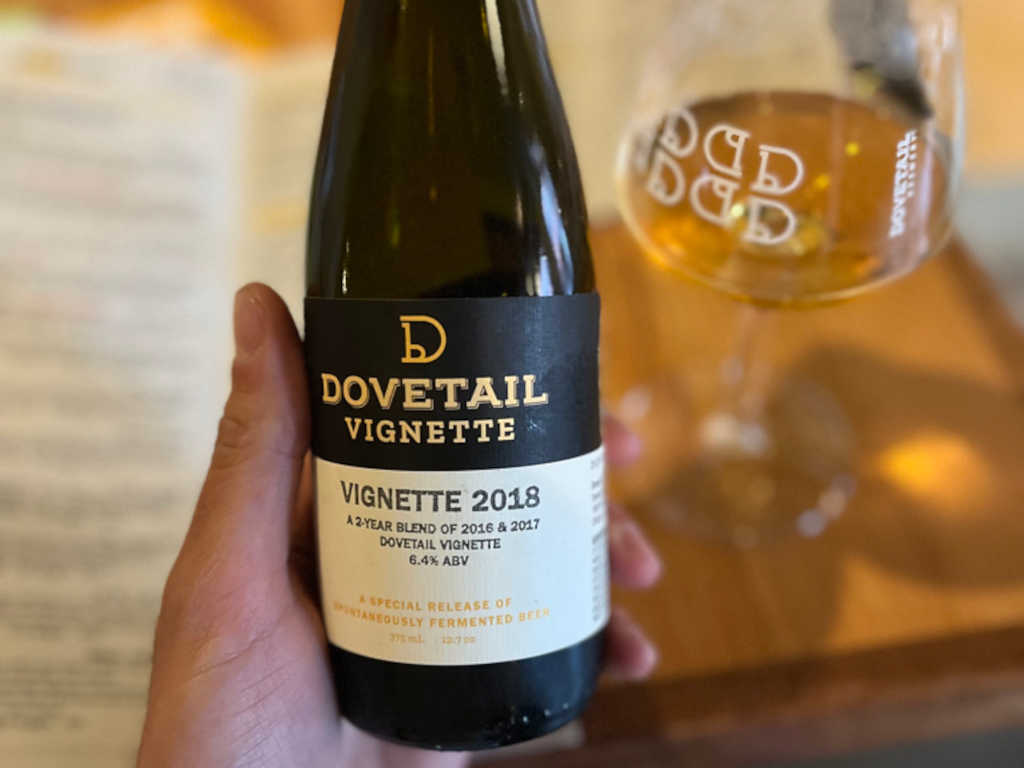
Arriviamo verso le 13:30 e Jenny è li ad aspettarci al bancone, io e Heather ci sediamo.
J: “Che birre volete? Direi di farci qualche birra qua e poi vi porto a fare un giro. Facciamo così, nel frattempo che date un’occhiata al menù delle birre, vi vado a prendere una nostra bottiglia.”
Prendo il menù e vedo, come mi aspettavo, un elenco sconfinato di birre tedesche tradizionali, qualunque stile possiate immaginare. Ma poi, Heather fa: “oh guarda, hanno anche birre acide dietro..Non me lo avevi detto..”
Giro il menù e saltano fuori perlomeno una quindicina di referenze acide, tutte spontanee e con la frutta. Jenny non mi da neanche il tempo di rimanere incredulo che si avvicina con una bottiglia della loro birra “Vignette 2018”, un blend di spontanee del 2016 e 2017, imbottigliata nel 2018 ed invecchiata 4 anni in bottiglia! La apre, me la versa nel bicchiere, e dopo averci buttato il naso dentro, mi giro verso di lei fissandola in silenzio (sempre con il bicchiere aggrappato alla faccia).
E le chiedo sottovoce: “Ma voi chi siete scusa?”.
E Heather di rimbalzo: “Sembra una delle tue! Jenny è per quello che non parla e fa quella faccia, di solito si lamenta sempre di tutte le birre acide che assaggiamo, ma si vede che questa è diversa.”
J: “Allora ve ne faccio assaggiare altre.. quale preferite?”
E ci porta una carrellata delle loro migliori spontanee, da quella alle pesche, a quella alle susine, a quella alle ciliegie acide. Una migliore dell’altra. Ci deve essere qualcosa dietro, non si fanno a caso birre così.
J: “Prendete la birra che vi rimane e seguitemi che vi porto a fare un giro.”
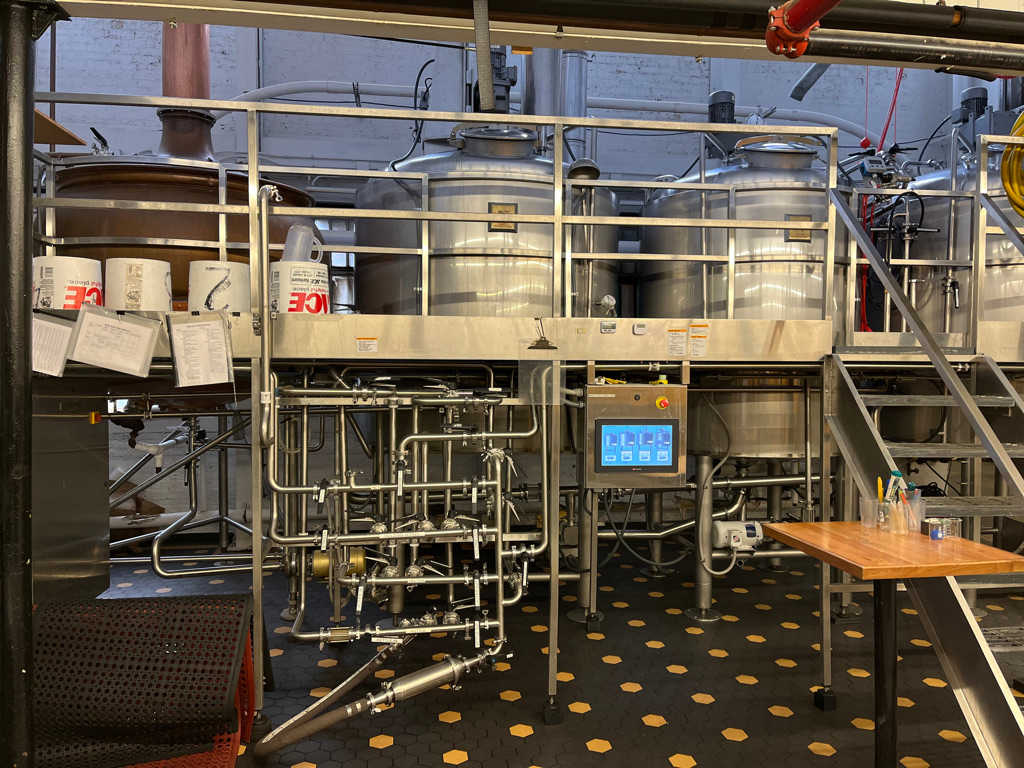
Entrando in produzione noto subito la sala cotte, che di solito, non è niente di particolarmente sexy. Ma questa ha qualcosa di diverso. È studiata, ha del fascino, si sente subito. Quattro tini sui 20/30hL, di cui tre di acciaio e uno di rame, il quale ha una forma molto rotondeggiante, quasi sensuale. Se lo dovessi paragonare a qualcosa che ho già visto direi che assomiglia vagamente, ma neanche poco, alla Venere di Willendorf.
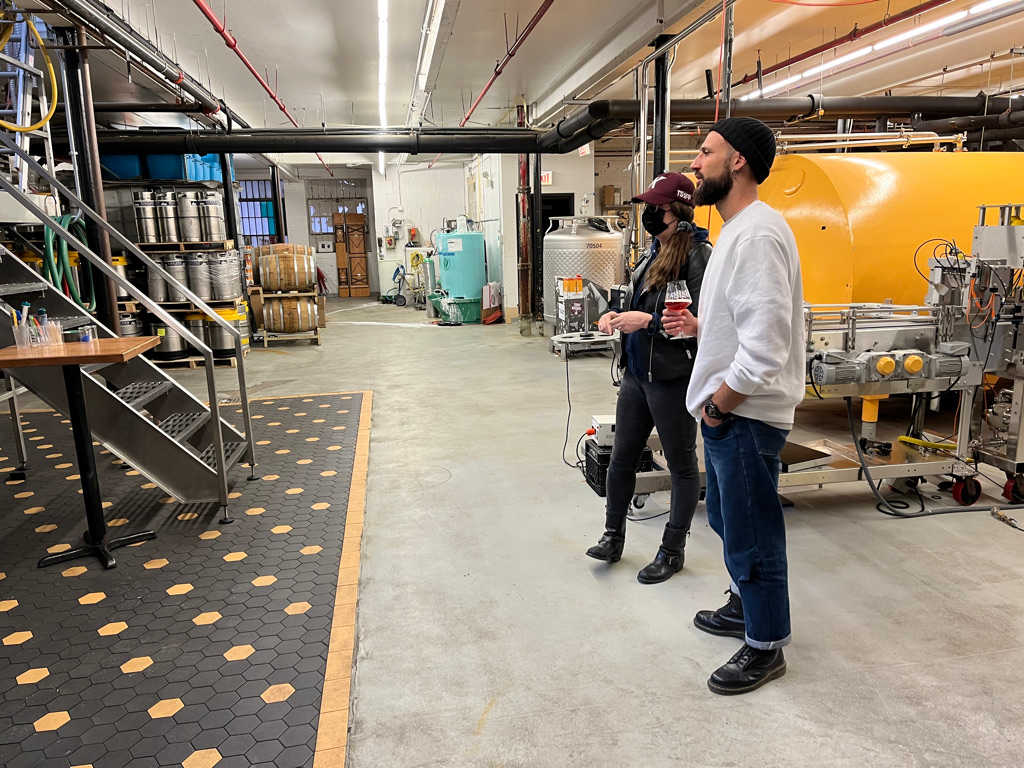
Le forme, l’estetica, si crede siano ormai irrilevanti in questa era scientifica in cui viviamo. Sembrano concetti superficiali, quasi stupidi. Tutto deve essere “provato scientificamente” per avere un valore. La verità si crede sia custodita dagli scienziati. A mio parere, niente di più lontano dalla realtà. Ci sono cose che sono troppo complesse per essere spiegate con la mente razionale e con due formule matematiche. E quelle forme, quella bellezza, quel “qualcosa” che sentivo, non era inventato. Quel tino li viene dal birrificio in attività più antico al mondo, Weihenstephan in Germania, che ha più di mille anni di attività alle spalle. In particolare, quel bollitore ne ha più di cento, ed era usato come impiantino pilota, per fare prove di produzione. Loro lo usano come tino di raccolta del mosto durante le varie decozioni, e anche se non ha un “ruolo predominante” nel processo, si può dire che è con la sua aurea di santità birraria assume il ruolo di protettore e supervisore del processo. È un’entità del birrificio. E si sente.
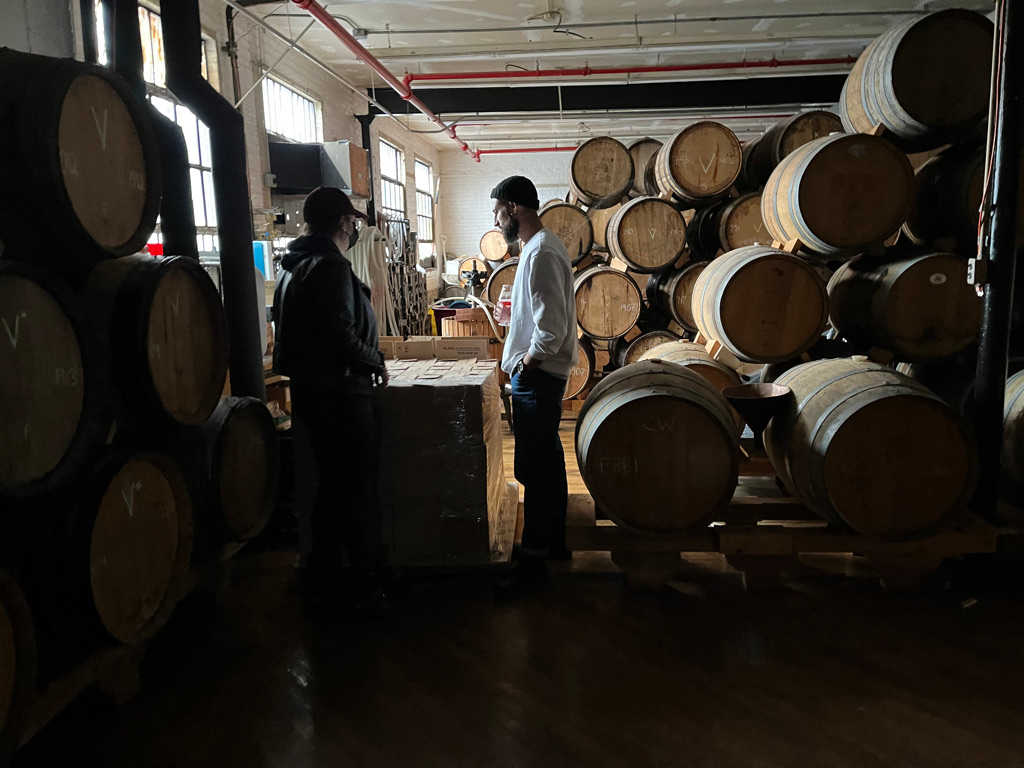
Dopo avermi mostrato i classici, tradizionali maturatori orizzontali, al cui interno vengono fatte maturare le birre per le consone quattro settimane di freddo (lagerizzazione), come ogni vero birrificio crucco richiede, mi porta su per le scale al piano superiore, senza preannunciare cosa sarebbe venuto dopo.
Camminando in quello che sembra un magazzino con un bel po’ di roba “buttata” a caso, inizio ad intravedere del legno, in lontananza; saranno una trentina di barrique. E penso: “Allora un po’ di birra in botte la fanno!”. Continuando a camminare capisco che il magazzino in realtà si allunga su una grande superficie e vedo altre file di barrique; al che chiedo a Jenny la fatidica domanda: “Quante botti avete?”
J: “Circa ottocento.”
T: “No, non ho capito, scusa sono italiano. Quante?”
J: “Ottocento.”
T: “No, scusa, ma è passato il treno e non ho capito. Quante?”
Jenny e Heather in coro: “OTTOCENTO!”
T: “Cazzo! Pensavo meno.”
Per farvi avere un termine di paragone, quando lavoravo a Cantina Errante e pensavo di essere un figo con un super progettone ho avuto al massimo cinquanta barrique. Sedici volte tanto.
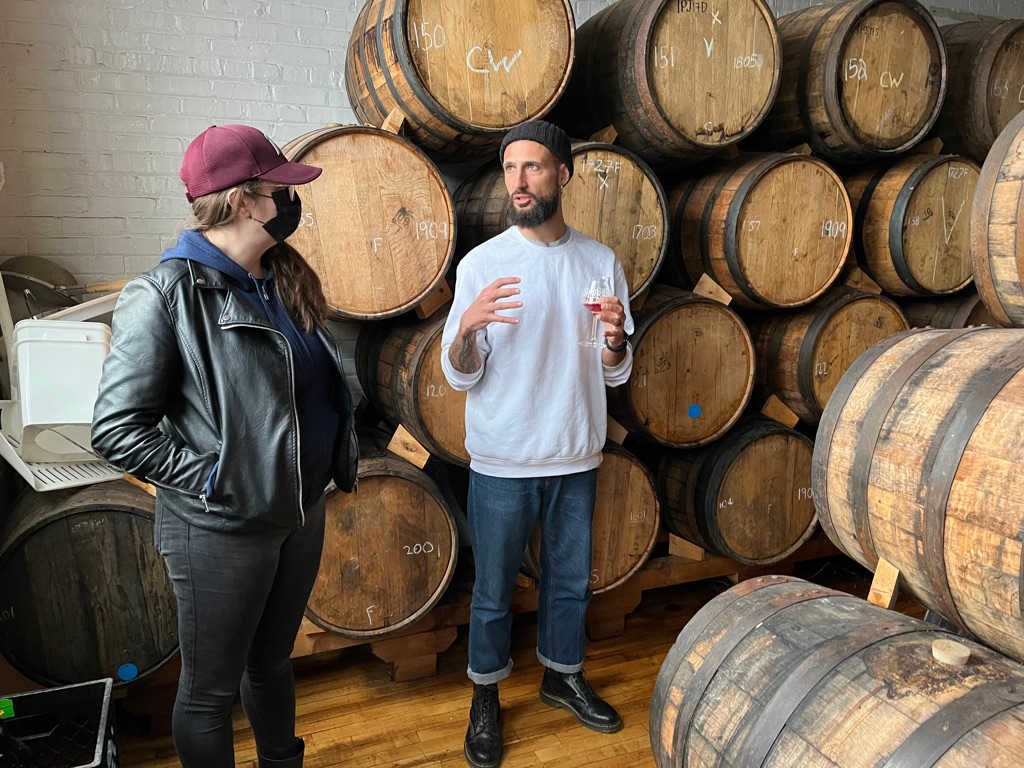
Estasiato e sempre più incredulo, che una realtà del genere possa esistere in città a Chicago entriamo nella stanza che è ancora più straordinaria per un posto del genere. La coolship-room.
La stanza in cui ogni mosto, ogni produzione, sosta per il raffreddamento pre-fermentazione. Si, avete letto bene, ogni mosto passa di lì. Dal piano di terra pompano il mosto al piano superiore per raffreddarlo, per poi, rimandarlo giù alle camere di fermentazione, o direttamente alle botti. Hanno la caparbietà, la voglia, l’energia di raffreddare in metodo tradizionale, non solo le birre a fermentazione spontanea, ma, anche le birre pulite. Dei geni. O dei pazzi. Quale è la differenza?
E comunque è abbastanza strano e suggestivo vedere una coolship in un sottotetto di Chicago con la metropoli che vive e si muove a velocità inaudita, fuori da quelle finestre, che di solito, nel vecchio continente, o nei nuovi progetti di birre naturali hanno sfondi completamente diversi. Boschi, prati, paesaggi bucolici, extra-naturali e selvaggi. Qua invece siamo in città. Eppure, funziona. E pure bene. Segnate gente – si può avere una coolship ovunque, basta avere le palle di farlo però.
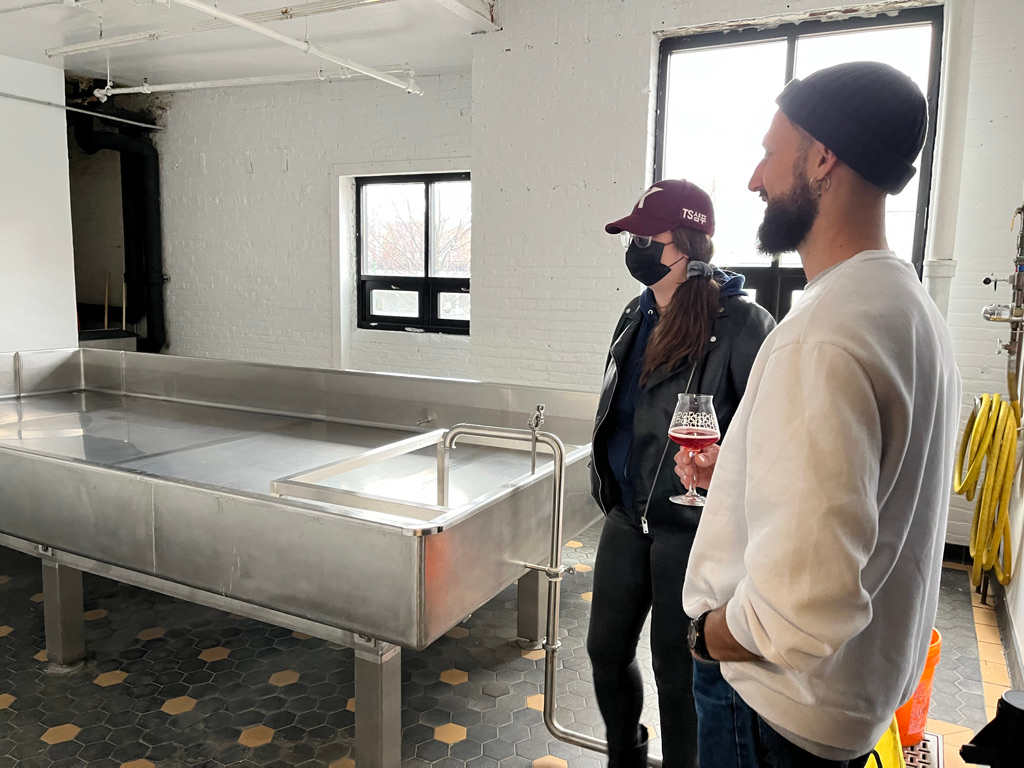
Finendo il giro immersi in quelle file e file di botti, di cui la maggior parte sono di rovere americano proveniente da ex distillerie, ci dirigiamo verso la sala di fermentazione; ultimo fiore all’occhiello di questo birrificio straordinario. Chiaramente, oramai sbalordito da tutte le sorprese e attenzioni tecniche che mi ha mostrato Jenny, non potevo che avere aspettative per questa ultima tappa della visita. I fermentatori sono aperti! Sembra davvero di stare in Franconia. E ora comprendo a pieno il loro motto:
We brew like monks (minus the vows) – Birrifichiamo come monaci (senza i voti)
Hagen e Bill, sono i fondatori e birrai di questa splendida realtà. E posso dire senza alcun dubbio, che è una delle poche volte in cui mi sono trovato completamente, al 100%, immerso nella filosofia produttiva; trovandomi completamente allineato e d’accordo in ogni aspetto del loro metodo produttivo, che più che un metodo, è uno stile di comprensione della realtà. Un modo di agire.
Se dicono che loro producono come monaci, non è una trovata pubblicitaria, non sono solo parole. Credetegli, perché loro lo fanno davvero. Non sono interessati ad intraprendere la via facile, ma solo quella che ritengono sia quella giusta, indipendentemente dalle difficoltà.
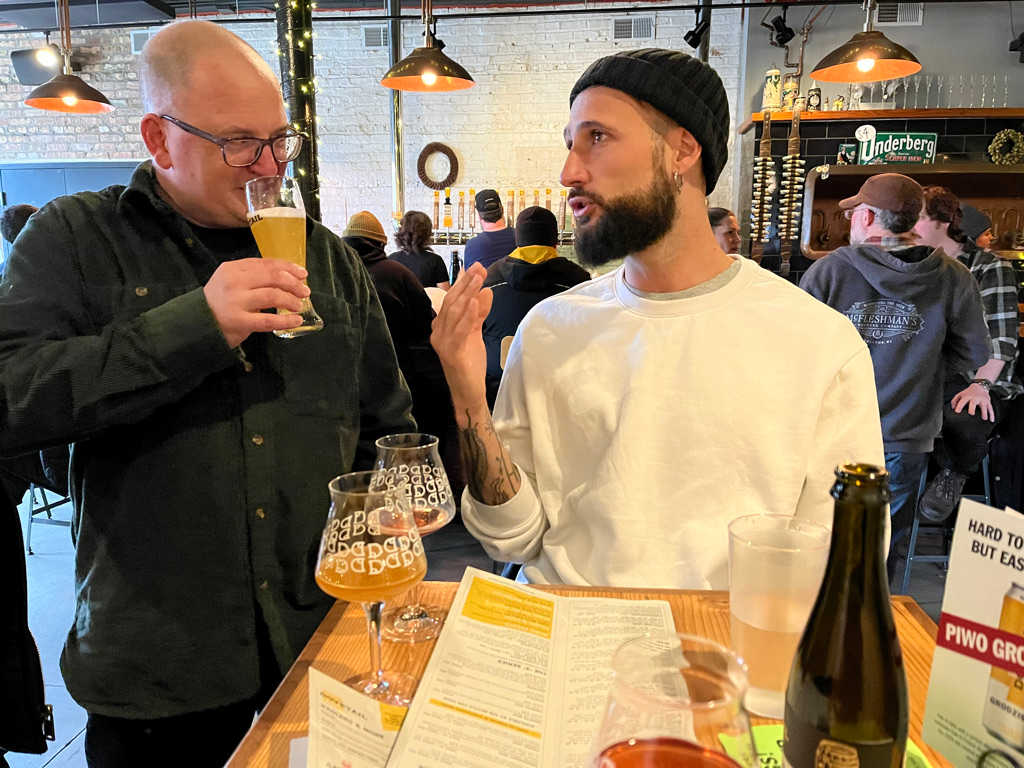
Lo dico sempre, ma in pochi mi capiscono realmente, dal profondo. Per me è logico agire in questo modo; affrontare in questo modo la vita, e di conseguenza produrre i fermentati che produco. È difficile spiegarlo a parole. Ma quando, per caso, alla fine della visita, Jenny mi ha presentato Hagen, che era li a bersi una delle sue birre con un gruppo di amici, e invece ha scelto di staccarsi per blendare le nostre idee per un bel po’, ho capito subito che eravamo fatti della stessa pasta, che ogni concetto espresso era immediatamente accolto e compreso, e che posso dire, senza ombra di dubbio, di avere almeno un’altra anima gemella birraria in giro per il mondo.
Pancia. Cuore. Testa.
Metti in pratica la tua filosofia di vita.
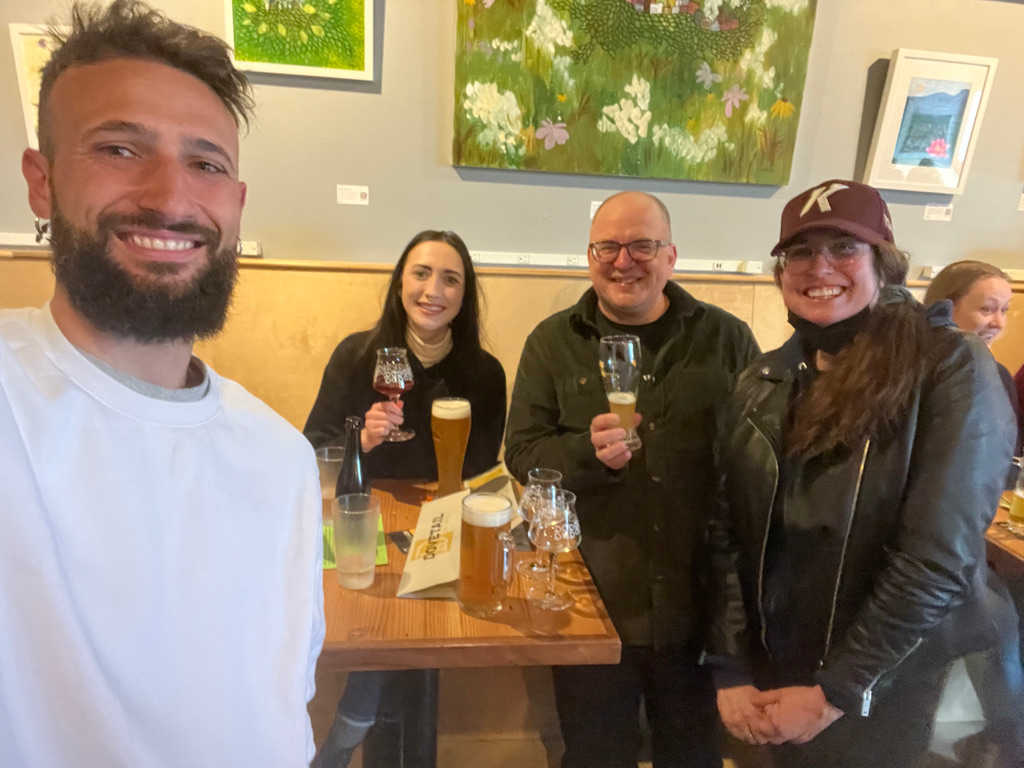
ENG Version
Dovetail Brewery in Chicago. If I have to tell you the truth, when I was selecting among the countless breweries in the largest metropolis in all of Illinois, initially, I thought this brewery was "just" one another of those German-inspired breweries. And, honestly, I'm not a huge fan of that. After visiting the website and social pages, I had initially put it in the "maybe-list." I don't know, but when you have to choose which brewery to visit in a city with almost 200 breweries (!), you become pretty ruthless and selective – having only the information that comes from the internet. But, now one thing is certain... if I hadn't gone, I would have regretted it.
In the end, I decided to put the brewery in the top 10, and I started e-mailing. Finally, a brewer, Jenny, responded to my self-invitation to their home, where I described my experience in the world of sour and natural beers. In the kind and friendly response, I notice a small note at the bottom:
"I'll show you our spontaneous brewing project then..."
And I think, "What?! What?! What are you talking about?!... Is it the wrong brewery? It wasn't the German-style brewery?". I recalled checking their website/social and not seeing anything like that – no barrels in plain sight, no coolship. And I think back: "If they had a serious project of spontaneous sour beer in downtown Chicago, wouldn't it be written all over... Imagine the pictures they would take... Is she joking with me... Or maybe they're working on a little side project, but it won't be a big deal."
That's as far as it goes. You will see.
We got there around 1:30, Jenny was waiting for us at the bar, and Heather and I sat down.
J: "What beer do you want? We have a few beers here, and then I'll take you for a tour around the brewery. Tell you what, in the meantime, you take a look at the beer menu; I'll go get you a bottle."
As I expected, I take the menu and see an endless list of traditional German beers, whatever style you can imagine. But then Heather goes, "Oh look, they also have sour beers! You didn't tell me they have it."
I turn the menu and see at least fifteen sour references, all spontaneous and with fruit. Jenny doesn't even give me the time to be surprised – instead, she's now approaching with a bottle of their beer "Vignette 2018", a blend of spontaneous 2016 and 2017, bottled in 2018 and aged four years in the bottle! She opens it, pours it into my glass, and after throwing my nose in it, I turn to her, staring silently (always with the glass clinging to my face).
And I ask her quietly: "But who are you?".
And Heather bounced: "Looks like one of yours, Tom! Jenny, his silent smile is a good sign. He's usually critiquing all the sour beer we taste, but you can tell this is different."
J: "Then I'll let you taste some more. Which do you prefer?"
And she brings us a round of their best spontaneous ones – from peaches to plums to sour cherries. Each one was getting better and better. There must be something behind it.
J: "Take your beer and follow me. Let's go!"
Upon entering production, I immediately notice the brewhouse, which is usually nothing particularly sexy. But this one has something different. It has some sort of charm; that you can't help but feel as soon as you enter. Four vats on 20/30hL, three of which are steel and one copper, which has a very round, almost sensual shape. If I were to compare it to something I've already seen, I'd say it looks vaguely, but not negligible, like the Venus of Willendorf.
The forms and aesthetics are believed to be irrelevant in this scientific era in which we live. They seem superficial concepts, almost stupid. Everything must be "scientifically proven" to have value. The Truth is believed to be guarded by scientists. In my opinion, nothing could be further from the truth. Some things are too complex to be explained with the rational mind and two mathematical formulas. And those shapes, that beauty, that "something" that I felt, wasn't just created by my mind. That vat comes from the oldest working brewery in the world, Weihenstephan in Germany, which has more than a thousand years of activity behind it. In particular, that kettle is over a hundred years old, and it was used as a pilot plant to do production tests. They use it like a vat to collect the must during the various decoctions. And even if it does not have a "predominant role" in the process, it can be said that it is with its aura of beer holiness that takes on the role of protector and supervisor of the process. It's a brewery entity. And you feel.
After showing me the classic, traditional horizontal bright tanks, inside which the beers are matured for four weeks of cold (lagerization), as every real Kraut brewery requires, she takes us up the stairs to the upper floor without announcing what would come next.
Walking in what looks like a warehouse with a lot of stuff "thrown" at random, I begin to glimpse the wood in the distance; there could be about thirty barriques. And I think: "Then you put some beer in the barrels!". Continuing to walk, I understand that the warehouse stretches over a large surface, and I see other rows of barriques; I ask Jenny the big question, "How many barrels do you have?"
J: "About eight hundred."
T: "No, I don't understand; sorry, I'm Italian. How many?"
J: "Eight hundred."
T: "No, sorry, but the train passed, and I didn't understand. How many?"
Jenny and Heather in chorus: "EIGHT HUNDRED!"
T: "Fuck it! I thought your project was smaller."
To make a comparison, when I was working at Cantina Errante, and I thought I was cool with a super project, I had at most fifty barriques. Sixteen times as much.
Ecstatic and increasingly incredulous that such a reality could exist in the city of Chicago, we enter the room that is even more extraordinary for such a place. The coolship-room – the space where each wort, each production, stops for the pre-fermentation cooling. Yes, you read it right; every wort passes through there. From the ground floor, they pump the must to the upper floor to cool it and then send it down to the fermentation room or directly to the barrels. They have the stubbornness, the desire, and the energy to cool in the traditional method, not only beers with spontaneous fermentation but also clean beers. Geniuses. Or crazy people. What is the difference?
And anyway, it's quite strange and suggestive to see a coolship in an attic of Chicago with the metropolis that lives and moves at an unprecedented speed, outside those windows, which usually, in the old continent, or new projects of natural beers have completely different backgrounds. Woods, meadows, bucolic, extra-natural, and wild landscapes. This is the city. And yet, it works. And well too. Take notes, folks; you can have a coolship anywhere you have the balls to do it.
Finishing the tour immersed in those rows and rows of barrels, of which most are of American oak from former distilleries, we head to the fermentation room, the last flagship of this extraordinary brewery. Now amazed by all the surprises and technical attention that Jenny showed me, I couldn't help but have expectations for this last stage of the visit. The fermenters are open! It really feels like Franconia. And now I fully understand their motto:
"We brew like monks (minus the vows)"
Hagen and Bill are the founders and brewers of this beautiful reality. And I can say without any doubt that it is one of the few times I have found myself entirely, 100%, immersed in the philosophy of production. Finding myself fully aligned and in agreement with every aspect of their production method, which, more than a method, is a style of understanding reality. A way of acting.
If they say they produce like monks, it's not a publicity stunt; it's not just words. Believe them because they do. They are not interested in taking the easy way, but only what they think is the right way, regardless of the difficulties.
I always say that, but few people understand me from the bottom of my heart. So for me, it is logical to act in this way; face life in this way, and consequently produce the ferments I create. It's hard to put into words. At the end of the visit, Jenny introduced me to Hagen, who just so happened to be at the bar drinking one of their beers with a group of friends. He chose to break away from his friend to sit down and share a beer together while we blended our ideas for quite a while. And every concept expressed was immediately accepted and understood; I can say, without a shadow of a doubt, to have at least one other brewing soulmate around the world.
Gut. Heart. Head.
Put your life philosophy into practice.



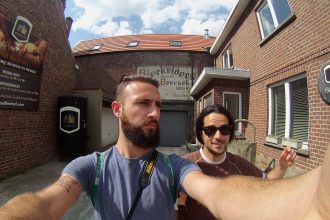
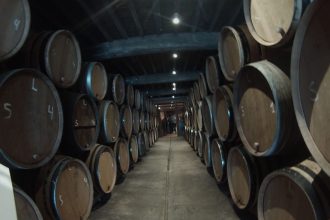
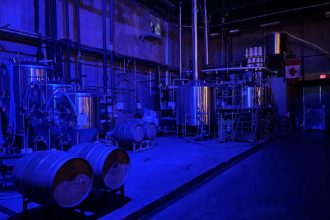
Lascia un commento